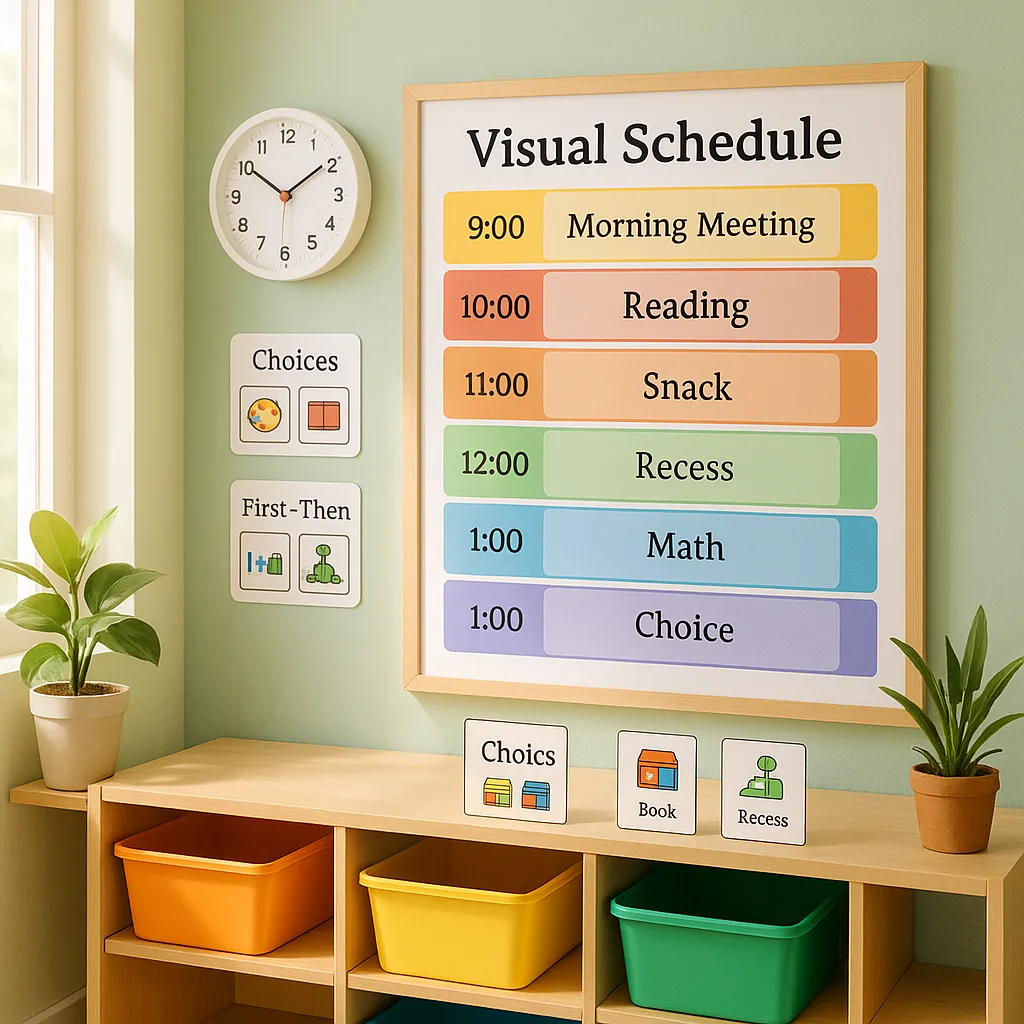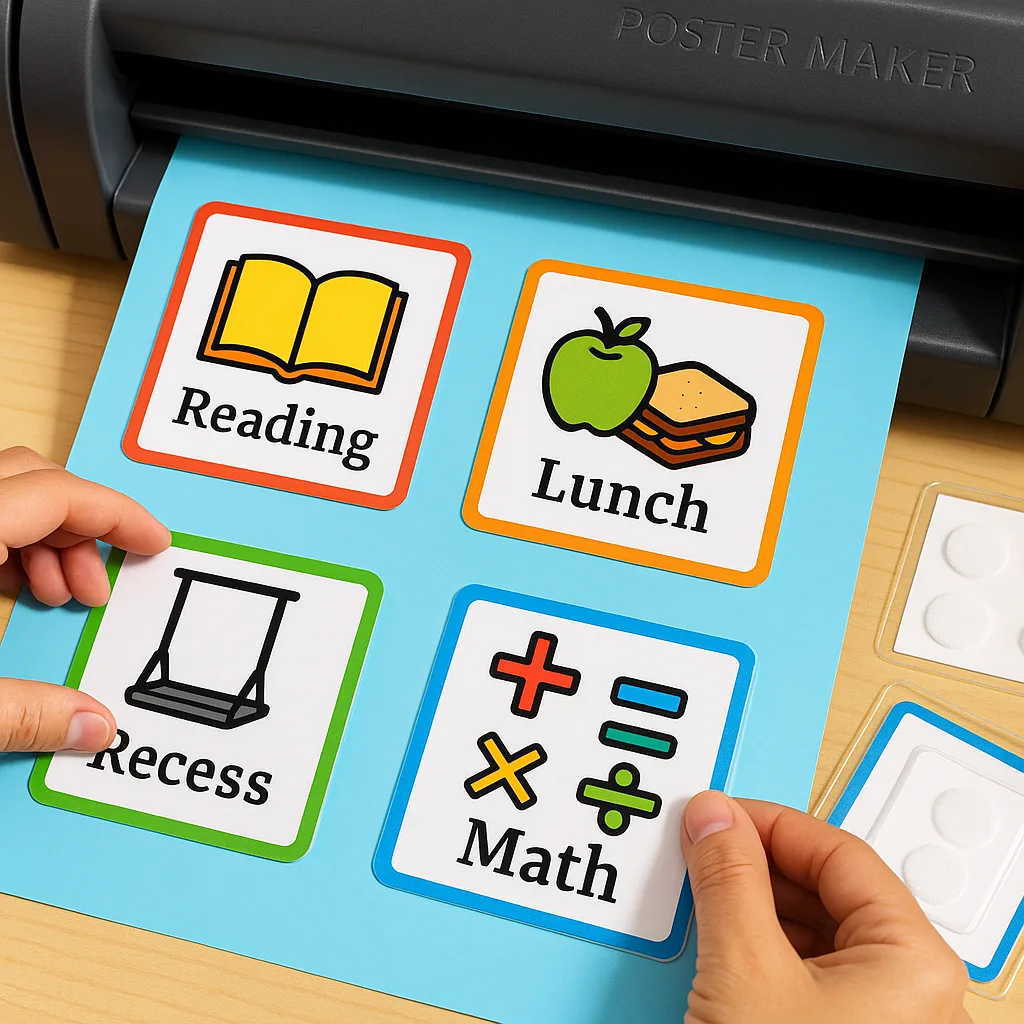Visual Schedules for Neurodivergent Students | Teacher Guide
Understanding Neurodivergent Learning Needs
Research from the Journal of Autism and Developmental Disorders confirms what many of us have observed: visual supports significantly reduce anxiety and improve task completion for neurodivergent learners. Furthermore, these tools provide the predictability and structure that many students need to navigate their school day successfully.
When designing visual schedules, we must consider the diverse processing styles of our students. For instance, some learners with ADHD benefit from high-contrast, minimalist designs that reduce visual clutter. Meanwhile, students on the autism spectrum often respond well to consistent color coding and familiar symbols that create clear expectations for transitions.
Creating Your Poster Maker Machine for Neurodivergent Schedules
The journey to creating effective visual schedules begins with understanding your tools. A quality best poster maker for schools offers the flexibility to produce various sizes and styles of visual supports. From pocket-sized task cards to wall-mounted daily schedules, having the right equipment empowers you to meet diverse student needs.
Implementing Visual Schedules Across Different Needs
Every neurodivergent learner brings unique strengths and challenges to the classroom. Therefore, our visual schedules must be equally diverse and adaptable. Let’s explore specific strategies for different learning profiles.
For Students with ADHD
Students with ADHD often struggle with time blindness and task initiation. Visual schedules that incorporate time indicators—such as clock faces or color-coded time blocks—help these learners understand the passage of time. Consider creating “first-then” boards that break complex tasks into manageable steps.
For Students on the Autism Spectrum
Predictability and routine provide comfort for many autistic students. Their visual schedules should include detailed information about transitions, including what happens before and after each activity. Photo schedules showing actual classroom spaces and materials can reduce anxiety about upcoming changes.
Practical Applications in Your Classroom
Using Your Poster Maker Machine for Neurodivergent Schedules Effectively
The technical aspects of creating visual schedules matter as much as the design principles. When selecting a poster making machine, consider models that offer versatility in paper sizes and finishes. Laminated schedules withstand daily handling, while matte finishes reduce glare for light-sensitive students.
Material Considerations:
• Coated paper for durability and easy cleaning
• Repositionable vinyl for schedules that change frequently
• Magnetic backing for moveable schedule pieces
• Weather-resistant options for outdoor learning spaces
The Classroom Pro 24 Poster Maker Elite Package includes various media options perfect for creating adaptable visual supports.
Measuring Success and Making Adjustments
Creating effective visual schedules is an iterative process. Regular assessment helps us refine our approaches and ensure we’re meeting each student’s evolving needs. Data from a longitudinal study by the CDC’s Autism and Developmental Disabilities Monitoring Network shows that students who use personalized visual supports demonstrate measurable improvements in classroom engagement and peer interactions.
Track these key indicators to evaluate your visual schedule effectiveness:
• Transition time reduction: Document how long students take to move between activities
• Anxiety behaviors: Note decreases in stress-related behaviors during schedule changes
• Independence markers: Record instances of students using schedules without prompting
• Engagement levels: Observe participation rates during scheduled activities
“Since implementing individualized visual schedules, I’ve seen my students with autism reduce meltdowns by 60% and increase independent task completion by 80%. The investment in a quality poster maker has paid for itself in reduced behavioral interventions alone.”
— Sarah Martinez, Special Education Teacher, California
Professional Development and Community Support
Creating inclusive visual supports isn’t a solitary journey. Collaborating with occupational therapists, speech-language pathologists, and behavior specialists enriches our understanding of individual student needs. Many schools find that investing in a best poster maker for schools becomes a catalyst for interdisciplinary collaboration.
Consider forming a visual supports team within your school. This group can share templates, troubleshoot design challenges, and ensure consistency across classrooms. When students encounter familiar visual language throughout their school day, the cognitive load of interpreting new information decreases significantly.
Conclusion: Empowering Every Learner
Visual schedules represent more than organizational tools—they’re bridges to independence, communication aids, and anxiety reducers all in one. By investing in quality printing equipment and applying research-backed design principles, we create learning environments where neurodivergent students can thrive. Remember, the most effective visual supports are those created with individual students in mind, refined through observation, and adjusted as learners grow.
As you embark on creating visual schedules for your classroom, remember that perfection isn’t the goal—connection is. Each poster you create with your poster maker machine for school represents an opportunity to meet a student where they are and guide them toward greater independence. In my years of supporting educators, I’ve witnessed countless transformations sparked by something as simple as a well-designed visual schedule. Your commitment to creating these supports makes a profound difference in your students’ lives.


